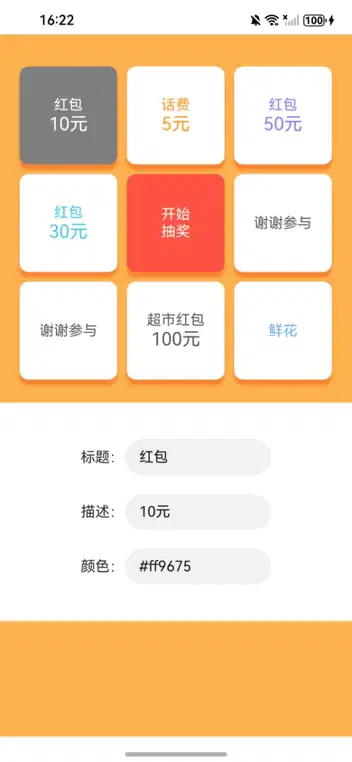This article demonstrates a lottery system implementation using HarmonyOS NEXT's reactive programming capabilities and component-based architecture. The solution features a dynamic 9-cell grid with configurable prizes and smooth animation effects.
Implementation Highlights
1. Reactive Data Model
// Observable Prize class with traceable properties
@ObservedV2
class Prize {
@Trace title: string // Prize title with reactive tracking
@Trace color: string // Color property for UI styling
@Trace description: string // Prize description
constructor(title: string, color: string, description: string = "") {
this.title = title
this.color = color
this.description = description
}
}
2. State Management Components
// Prize editor component with shared state
@Component
struct MyPrizeUpdate {
@Consume selectedIndex: number // Currently selected index
@Consume private selectionOrder: number[] // Lottery sequence
@Consume private prizeArray: Prize[] // Prize collection
build() {
Column({ space: 20 }) {
// UI elements for editing prize properties
}
}
}
3. Core Lottery Logic
@Entry
@Component
struct LotteryPage {
@Provide private selectedIndex: number = 0
private isAnimating: boolean = false
@Provide private selectionOrder: number[] = [0, 1, 2, 5, 8, 7, 6, 3]
// ...other properties
// Multi-stage animation control
startLottery(speed: number = 500) {
// Acceleration phase
}
runAtConstantSpeed() {
// Constant-speed phase with random duration
}
slowDown(speed = 50) {
// Deceleration phase with result display
}
}
Key Features
- Dynamic Grid Layout
Flex({ wrap: FlexWrap.Wrap }) {
ForEach(this.prizeArray, (item: Prize, index: number) => {
// Responsive cell rendering with click effects
})
}
- Three-Phase Animation
- Acceleration: Gradual speed increase (500ms → 50ms)
- Constant Speed: Random duration (40ms + n×50ms)
Deceleration: Progressive slowdown until stop
Interactive Configuration
TextInput({ text: this.prizeArray[...].title })
.onChange((value) => {
// Directly update reactive properties
})
- Visual Feedback
- Dynamic color schemes
- Click effects with scaling
- Real-time selection highlighting
- Shadow effects for depth perception
Complete Implementation
View full translated code with English comments on GitHub
Conclusion
This implementation showcases HarmonyOS NEXT's powerful capabilities in:
- Reactive state management (@ObservedV2/@trace)
- Component-based architecture
- Smooth animation control
- Responsive UI updates
The solution can be extended with additional features like network synchronization or prize probability configurations, demonstrating the flexibility of HarmonyOS application development.


